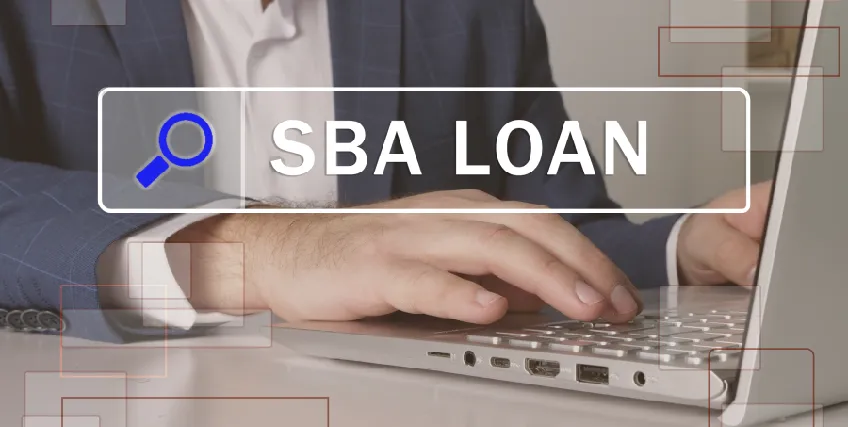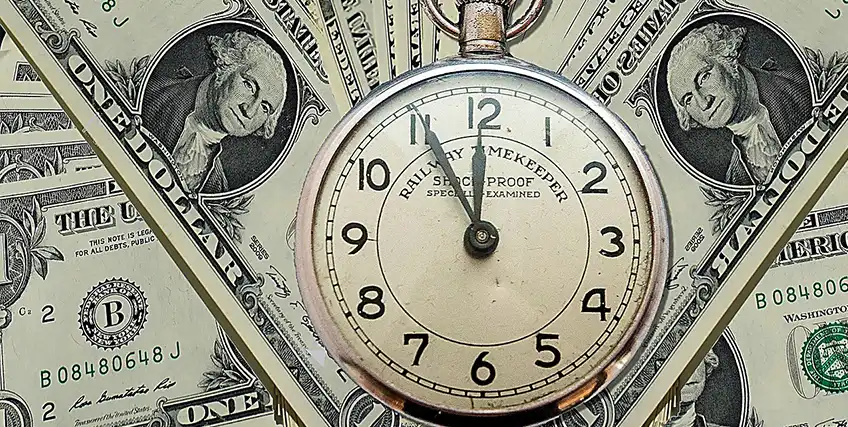The Definitive Guide to Small Business Loan Requirements
October 12, 2025 | Last Updated on: October 12, 2025

There are several different types of small business loans available for startups and small business owners. Each of the options have varying loan amounts, eligibility requirements, repayment terms, and lenders offering them.
Here’s what you need to know about securing a small business loan, what types of lending are available, and what to keep in mind throughout the loan application process.
What Goes Into Being Approved For A Business Loan
Credit Scores
Your personal credit score will very likely be considered when applying for a small business loan when evaluating creditworthiness. Business credit score may also come into play.
Credit scores for loans is one factor among many lenders consider to assess the risk they are taking on. If you have good credit, you’re considered a lower risk. If you have a low credit score, you are considered a greater risk to pay back. Borrowers pay a premium for the risk typically in the form of a higher interest rate on the loan amount.
If you’re unsure of your personal credit score, it’s advised to check prior to applying. You can get more information on how to check your credit score for free here.
Cash flow and income
Most business lenders require a certain level of annual revenue. Companies that have low revenue levels and significant periods of poor cash flow will find it challenging to secure financing.
Age of business
Firms that have been operating for shorter periods of time often have a hard time obtaining funding simply because they have not been in business long enough to show an established track record of payments. It can be challenging for companies younger than a year to prove they have cash flow demonstrating their ability to repay on time.
Most lenders will only accept applications from small businesses that have been operating for at least six months. There are exceptions, but this is generally the standard lenders use in evaluating borrowers for a small business loan.
Current amount of debt
Some lenders will review your debt-to-income (DTI) ratio to evaluate how much business debt you have compared to your receivables.
To find DTI, divide your monthly debt by your gross income. For example, if your monthly debt is $10,000 and the gross income is $20,000, your DTI ratio is 50% ($10,000/$20,000).
The higher your DTI ratio, the more of a risk you represent to a lender. If you can keep your DTI ratio at or below 43%, it should enhance your chances of qualifying for a loan.
Collateral
Lenders may demand business collateral as a prerequisite for approving a loan request. Collateral provides assets of value that can be obtained – and likely sold off – if a borrower defaults on a loan. Much of this is determined by the overall loan amount.
Borrowers may need to use business assets like equipment or real estate as collateral, which refers to personal assets that the owner of the company already possesses.
Industry
Seasonal businesses could also hinder the likelihood of loan approval because the lender might view their seasonal nature as posing a risk to the company’s cash flow. Lenders typically are wary of companies that have extended periods when cash flow is slow or even non-existent. Landscapers and amusement parks are examples of seasonal businesses whose off-seasons may weigh negatively in the underwriting process.
Have a Business Plan In Place
A written business plan provides lenders with a detailed roadmap of your business's objectives, strategies, and financial projections. This document demonstrates to potential lenders that you have thoroughly researched and thoughtfully planned your business venture.
The plan outlines market analysis, target audience, competitive landscape, and operational strategies, giving lenders confidence in your ability to execute your plan effectively. It also establishes a financial forecast that highlights your revenue streams, cost structures, and profitability projections.
Financial Documentation
In addition to having a solid business plan and credit report provided by credit bureaus, entrepreneurs should have ready the following financial documents that are typically required in the loan application process.
Business bank statements
At least six months of business bank statements will be required for most applications. Some lenders may ask applicants to also provide personal financial statements or bank statements to determine eligibility.
Personal and business tax returns
Again, this will vary based on the lender. Generally, they want to see history of paying taxes over the history of the business.
Income statements
A profit-and-loss statement displays revenues and expenses for an accounting period and indicates whether a business is making a profit.
Balance sheet
In contrast to an income statement, a balance sheet lists the assets and liabilities of a company and the owners’ equity. Assets are what you own; Liabilities are what you owe.
Cash flow statement
A cash flow statement shows the amount of cash entering and leaving your business in a given period. Cash flow management is a core indicator to a lender if your business is considered for a small business loan.
Small Business Financing Options to Consider
There are several types of small business financing options available to business owners. Each loan differs in it’s application process, requirements for borrowers, and how to repay the loan.
Here are a few options to consider:
SBA Loan
The U.S. Small Business Administration (SBA) offers commercial financing backed by the SBA. SBA Loan programs include SBA 7(a) loans, 504 loans and microloans. A 7(a) loan, the most common type of SBA loan, helps companies to buy or refinance owner-occupied commercial real estate properties up to $5 million.
The maximum allowed interest rates for the program are based on the Wall Street Journal Prime Rate plus a margin of a few percentage points. Interest rates can be fixed, variable, or a combination of the two. Loan terms for 7(a) loans used for commercial real estate may be as long as 25 years for repayment. Each monthly payment would be the same until the loan is fully repaid.
Merchant Cash Advance
Another avenue for borrowers is a merchant cash advance. Also know as revenue-based financing, this is when a company grants a borrower access to cash based on their accounts receivable, and is then required to pay a portion of sales made.
A merchant cash advance can be a quick way to obtain capital. The turnaround could be in as little as 24 to 48 hours. A merchant cash advance could be for as little as $1,000 or as much as $200,000 with minimal paperwork.
A merchant cash advance doesn’t require collateral or a minimum credit score. However, merchant cash advances involve higher costs compared to other small business loans.
P2P Loan
Borrowers with good FICO scores who need working capital quickly may consider applying for a peer-to-peer (P2P) loan.
Also referred to as marketplace lending, peer-to-peer (P2P) lending is a popular alternative to traditional lending. Peer-to-peer personal loans are offered directly to individuals without the intermediation of a bank, credit union, or traditional financial institution. Online lending platforms fund borrowers via institutional lending partners.
This type of business loan must be repaid with interest in a period of one to five years.
Invoice Factoring
Small businesses that are holding on to unpaid invoices could use invoice factoring. This is where businesses sell invoices at a discounted rate to a factoring lender and receiving a lump sum in return.
Here’s how it works. If a company sells something to a customer, but that customer cannot pay off the invoice right away, there’s a gap of time that could create a shortfall for the business owner. The lump sum that the business would receive by undertaking the process of invoice factoring would cover the shortfall and solve the cash flow problem.
Online Business Loan
Short-term loans from online lenders may be easier to get approval for compared to traditional lenders.
Choosing to apply for a short-term loan comes with the expectation that you might have to repay it over just a couple of weeks. If you have an installment loan, you have up to six months to pay it off. A short-term loan application is completed online and normally takes a matter of minutes to be approved.
Business Line of Credit
When a lender provides a pre-approved loan amount with a maximum credit limit, that is known as a business line of credit. If the borrower is approved for a line, funds can be accessed whenever they are needed until the established credit limit has been reached. This is similar to a business credit card.
Because the borrower is only paying interest on the amount withdrawn, a business line of credit can be advantageous for business owners who are uncertain of the amount of funding they will need.
The drawback to a business line of credit is that the loan may be at an interest rate that might be considerably higher compared to other loans. That cost will depend on the business owner’s loan application.
Short-Term Loans
A short-term loan is one in which the borrower receives their cash in a lump sum upfront, then repays the loan, often with some fairly sizable financing rates. Some short-term loans allow the borrower to make extra payments to pay it off sooner, while others may carry penalties for early repayment. Short-term loan options generally have a term of 12 months or less.
Although the business credit requirements are not as strict for short-term loans as they are for regular term loans, the frequent loan payment schedule may be burdensome for borrowers without consistent cash flow.
What’s Next After Meeting The Requirements For A Small Business Loan?
Seek out lenders that can provide a variety of options to meet your business needs. As you’re searching, get all your materials ready to bring to the lender so you can find out what you need to qualify for financing. Additionally, be sure to compare loan offers to see who can get you the best terms.
Once you have several offers, find the one with the best repayment terms and lowest annual percentage rate (APR).
FAQs about small business loans
What is required for a small business loan?
A small business loan application requires several parts to be approved. This can include detailed credit history, a personal guarantee that the loan will be paid back, bank account statements, documented business plans, and more.
Will I qualify for an SBA loan?
Qualifying for an SBA loan depends on several factors, including that it must be a for-profit business, the size of the business, the business’s history, creditworthiness, and more.
Can I get a business loan with bad credit?
You may be able to get a business loan with bad credit, but you could face high fixed rates on your loan agreement.
What disqualifies you from a small business loan?
You could be disqualified for a small business loan if you very recently started the business, as well as a low credit score.




